When spring turns a corner, Japan transforms into a wonderland of blushing hues, with countless places to view the fleeting beauty of cherry blossoms.
There are few natural phenomena as closely linked to Japanese beauty, culture, and philosophies as the short-lived pink blossoms beloved by the people of Japan.
The cherry blossom season is a particular time of the year that attracts locals, photographers, and travelers from all over the globe.

There is one keyword that encompasses Japan’s love for the captivating cotton candy-colored flowers: hanami (花見), which combines the kanji for “flower” and “look,” so it’s often translated as cherry blossom viewing.
This traditional custom brings the young and old together for a week to enjoy cherry blossoms’ transient nature and fleeting beauty.
Cherry blossoms can be found worldwide, but nowhere else celebrates spring coming, quite like Japan. With more than 600 species of cherry trees, from white to dark pink, Japan makes the most of these exquisite flowers with hanami.
What is Hanami?
Hanami means “flower viewing,” and it’s the traditional custom of enjoying the beauty of cherry blossoms.
It is synonymous with picnics with friends and family huddling together under the pink cherry with food and drink. It’s a joy-filled occasion where people of every age and occupation gather under the delicate blushing blossoms to admire, ponder and celebrate.
In ancient times, it was believed that cherry blossom trees enshrined deities such as mountain and rice field gods. For this reason, farmers made offerings to cherry trees during spring turns and prayed for a good harvest. As time passed, this tradition assumed different meanings and styles.
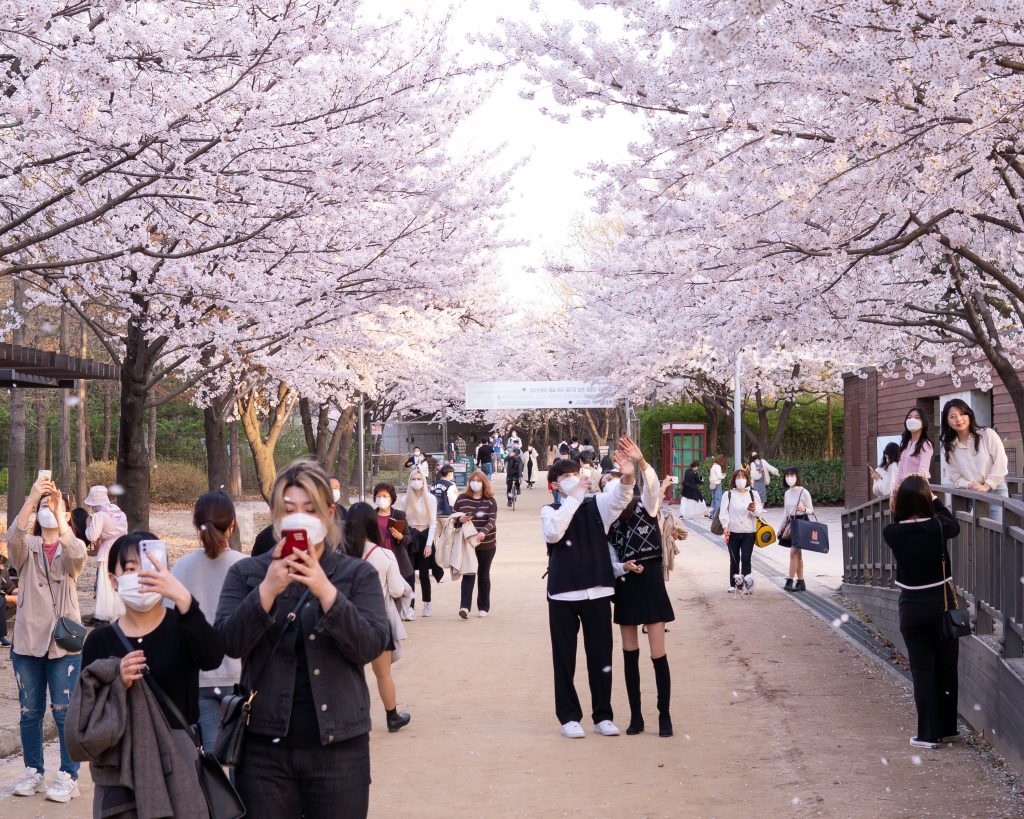
During the Heian era (794-1185), aristocrats admired the pink blooms and were inspired by their beauty and composed poems about them. But it wasn’t until the Edo era (1603-1867) that it became famous for commoners to go out on a picnic in spring and admire the flowers in a similar style to the hanami of today.
Fun fact, the Chinese characters to write ‘sakura’ in Japan has evolved and changed over time. Originally the ‘sa’ was written as the word for god, commonly used to refer to the god of rice fields. ‘Kura’ represented a pedestal used to honor a god with offerings of food and sake.
When the cherry blossom bloomed, it was believed to be a sign that the gods had come down from the mountains and that it was time to plant rice.
Philosophy of cherry blossoms
The custom of hanami is so much more than a big spring party. Throughout the year, the Japanese love to celebrate the colors of nature, from enchanting wisteria tunnels and sunflower fields to breathtaking hydrangea walks found on ancient temple grounds. But what sets cherry blossoms apart from all other flowers?
The answer lies in the cherry blossoms’ brief lifespan. Shortly after the flowers have fully developed, the wind whisks them away, reminding spectators of the brevity of their splendor. The passing of time is what defines the philosophy of cherry blossoms. The small, light-colored petals are a metaphor for life itself.
Nothing is more reminiscent of human mortality than the cherry blossoms. This acceptance of the natural passing of time defines the philosophy behind sakura and explains why its blooms have inspired writers, poets, artists, and more for centuries.
How to hanami
Hanami can be a stroll in a park, but it traditionally also involves a picnic held under the blooming trees. Famous cherry blossom spots can get very crowded, and the best picnic spots are fiercely sought.
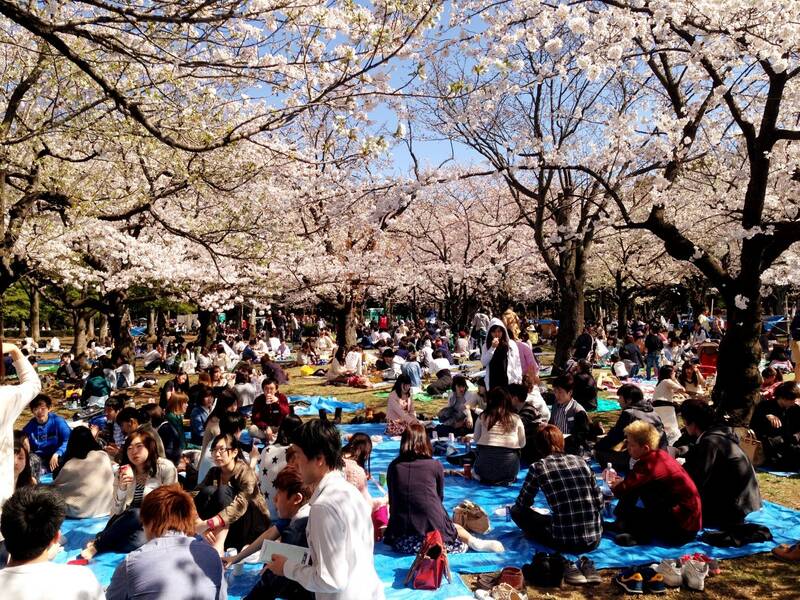
In popular parks and gardens, it is common practice to reserve a picnic spot long before the party starts. The typical practice is to spread one’s picnic sheet early in the morning and either mark it with the group’s name and the party’s starting time or have someone sitting three the whole day until the rest of the group arrives.
Be aware that in some parks, it is not allowed to leave a picnic sheet unattended.
There’s no hard or fast rule about what to eat at a hanami, but the Japanese love to mark special events with seasonal dishes. By tradition, the prevailing colors of the food are pink, red, and orange in honor of the spring season.
Hanami Bento
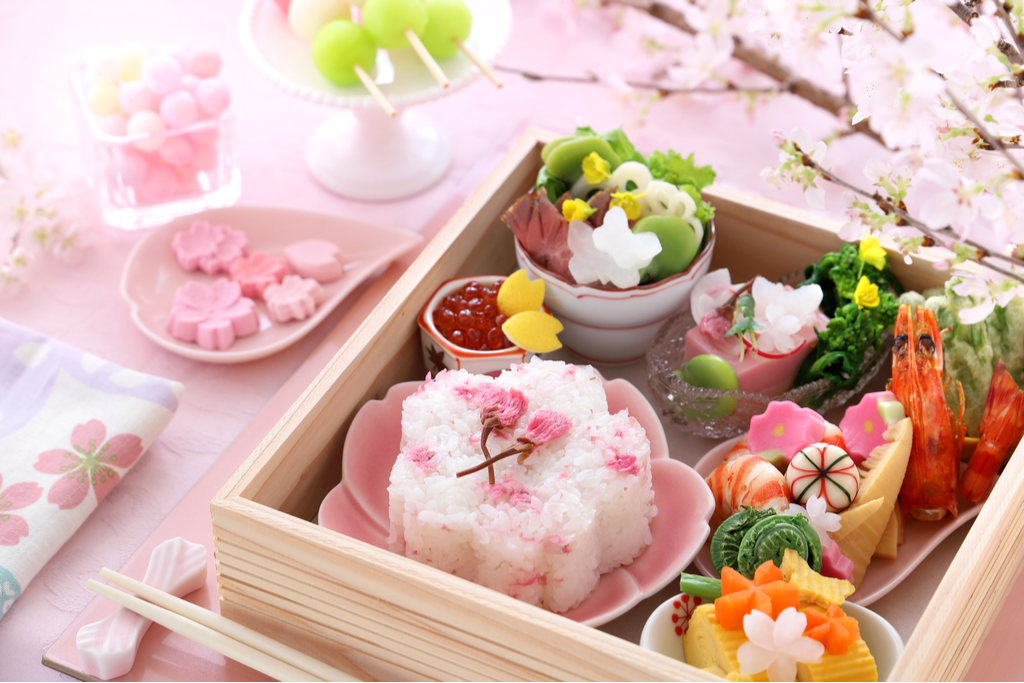
Thanks to anime, bento (Japanese packed lunch boxes) are well-known worldwide thanks to anime. Supermarkets and convenience stores always sell these with a wide variety of ingredients. Bento can be prepared at home and brought to the picnic.
During the hanami season, shops will offer hanami bento which features items like makizushi (sushi rolls), inarizushi (sushi rice stuffed into fried tofu pouches), tamagoyaki (Japanese-style omelet), pumpkin salads, shrimp, and more.
Hanami Desserts
Typically, sakura mochi is enjoyed at hanami parties. It is traditional Japanese sweet-colored rice containing red bean paste wrapped in salted cherry leaves.

Hanami Dango is another type of traditional sweet eaten during these spring picnics. It is a sweet dumpling made from rice flour and served in the springtime colors of white, pink, and green.
Strawberries are another popular hanami dessert. They’re eaten plain or with sweetened condensed milk drizzled over them, making for a perfect Instagram shot.
Hanami Drinks
Japanese drink companies waste no time in advertising their drinks plastered with images of pink sakura petals. Traditionally, sake is served at hanami parties, also called Yozakura, which can be translated to “night sakura,” but again, there are no strict rules.
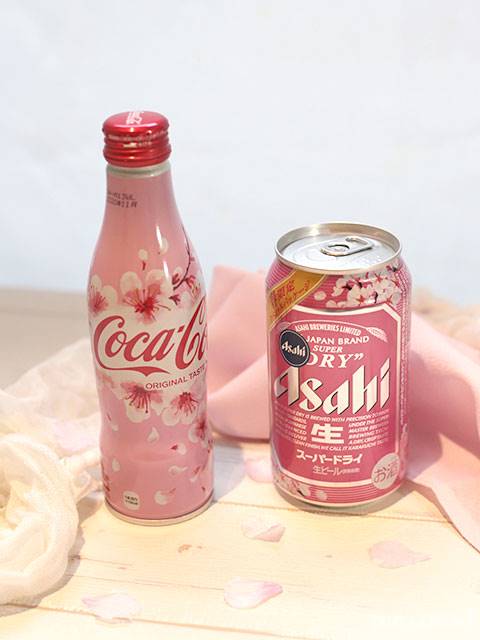
Beer has quickly become a popular contender amongst the younger demographic, with breweries releasing seasonal beer cans decorated with cherry blossoms. Does it taste any different from regular beer? Who knows, but it does make a hanami all the more fun.
There are also sakura versions of popular soda drinks during the hanami period in Japan, including Coca-Cola and Ramune.
Rules to Keep in Mind
Take Your Shoes Off
A picnic blanket is like a Japanese house; you knock on the door and take your shoes off before entering. There might not be a door, but you must take your shoes off.
It might not matter what you do on your picnic blanket, but when you are with friends, work colleagues, or even family, you should remember this Japanese rule. Leave your shoes at the edge of the blanket.
Pick up your rubbish
There are few public bins around, but that doesn’t mean you should litter. You must take your rubbish with you when you’ve finished a hanami.
The cherry blossoms bloom for less than two weeks, which means that people will be coming every day to view or have a picnic under the trees. Be mindful of this and respect the public facilities by keeping them clean.
Respect the Sakura Trees
Cherry trees are fragile and require a lot of care. Please don’t climb on the trees or break off the branches. While it might seem like a good idea to take a branch of cherry blossoms with you home, it would essentially expose the tree to harm to pests and diseases.
Lay back, enjoy the fleeting beauty of the cherry blossoms, and take lots of photos to reflect on the magical moment.
Where to hanami
The cherry blossom festival, also called sakura matsuri in romanized Japanese, brings out the crowds, which isn’t the ideal activity to participate in in the immediate future. It can be like being on the train during rush hour, but everyone is drunk and yelling instead of standing shoulder to shoulder and avoiding eye contact.
There are countless articles listing the best spots to view sakura in the main cities of Japan, from Tokyo and Osaka to Kyoto. But if that doesn’t faze you, you can find hanami spots from iconic, such as Ueno park, to secluded throughout Japan.
But for those based out in the sticks, these are some of our cherry blossom festivals recommendations:
Hokkaido
- Goryokaku in Hakodate
- Shizunai Nijukken Road in Hidaka
- Matsumae Park in Matsumae
- Moerenuma Park in Sapporo
- Shibazakura Takinoue Park in Mombetsu
Tohoku
- Hirosaki Park in Aomori
- Kakunodate Samurai Residences in Akita
- Kitakami Tenshochi Park in Iwate
- Kajo Park in Yamagata
- Mikamine Park in Miyagi
- Miharu Takizakura in Fukushima
- Tsutsujigaoka Park in Miyagi
- Takamatsu Park in Iwate
Kanto (excluding Tokyo)
- Odawara Castle in Kangawa
- Sankeien Garden in Yokohama
- Tsurugaoka Hachimangu in Kamakura
- Hill Hitachi Fudoki in Ibaraki
- Kumagaya Sakura Tsutsumi in Saitama
- Takasaki Castle Ruins in Gunma
Kansai (excluding Osaka and Kyoto)
- Hikone Castle in Shiga
- Nara Park in Nara
- Kaizu Osaki in Shiga
- Koriyama Castle in Nara
- Negoroji Temple in Wakayama
- Wakayama Castle in Wakayama
Chubu
- Tsuruma Park in Nagoya
- Iwakura Gojo River in Iwakura
- Takato Castle in Ina
- Kenrokuen in Kanazawa
- Okazaki Park in Okazaki
- Takada Castle in Niigata
- Four Seasons Road of Yamazaki River in Nagoya
- Asuwa River in Fukui
Chugoku
- Miyajima in Hiroshima
- Peace Memorial Park in Hiroshima
- Kurashiki River in Okayama
- Utsubuki Park in Tottori
- Kintaikyo Bridge in Yamaguchi
- Hii River in Shimane
Kyushu
- Ritsurin Garden in Kagawa
- Bizan Park in Tokushima
- Hirakiyama Park in Ehime
- Hyotan Sakura in Kochi
- Kinbuchi Forest Park in Kagawa
- Shiudeyama in Kagawa
Shikoku
- Isshingyo no O-zakura in Kumamoto
- Kumamoto Castle in Kumamoto
- Hosshin Park in Fukuoka
- Tadamoto Park in Kagoshima
- Nagasaki Prefectural Saikai Bridge Park in Nagasaki
- Tarumi/Darumizu Park in Miyazaki
Okinawa
- Nakijin Castle Remains in Kunigami
- Yogi Park in Naha
- Nangusuku Park in Nago
- Yaedake Sakura-no-Mori Park in Kunigami
- Sueyoshi Park in Naha
Frequently Asked Questions about Hanami in Japan:
Cherry trees bloom between late March and early April, depending on the year and the location in Japan. You can sometimes still do flower viewing in some Japanese gardens at the end of April.
Japanese people celebrate Hanami in Japan through outdoor activities such as cherry blossom viewing and picnicking under the cherry trees. This kind of gathering usually involves family or friends. Bring a beer and have fun with your friend at night at a park.
The Japanese cherry blossom festival means welcome to spring. In the Japanese tradition of the festival, hanami means observing flowers, and its history dates back to over 2000.

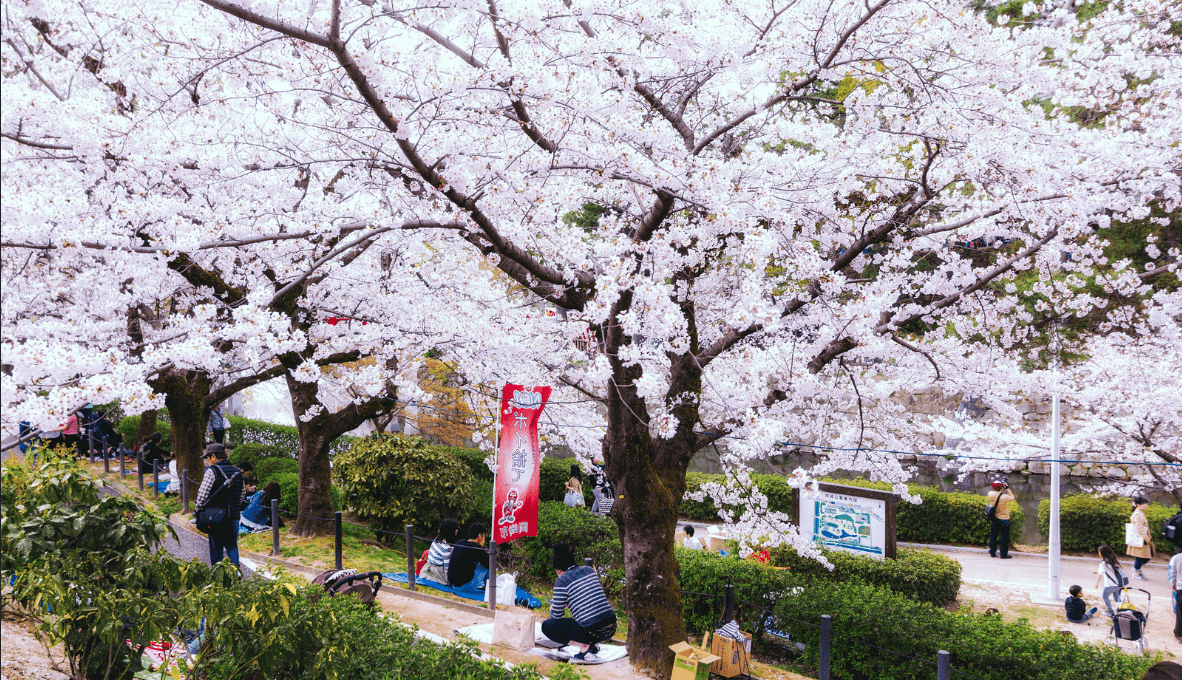
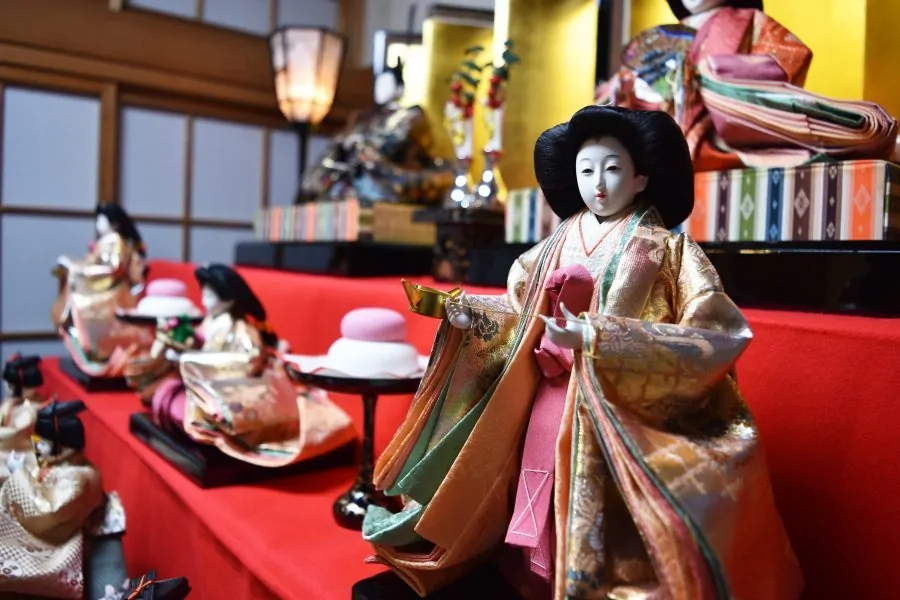

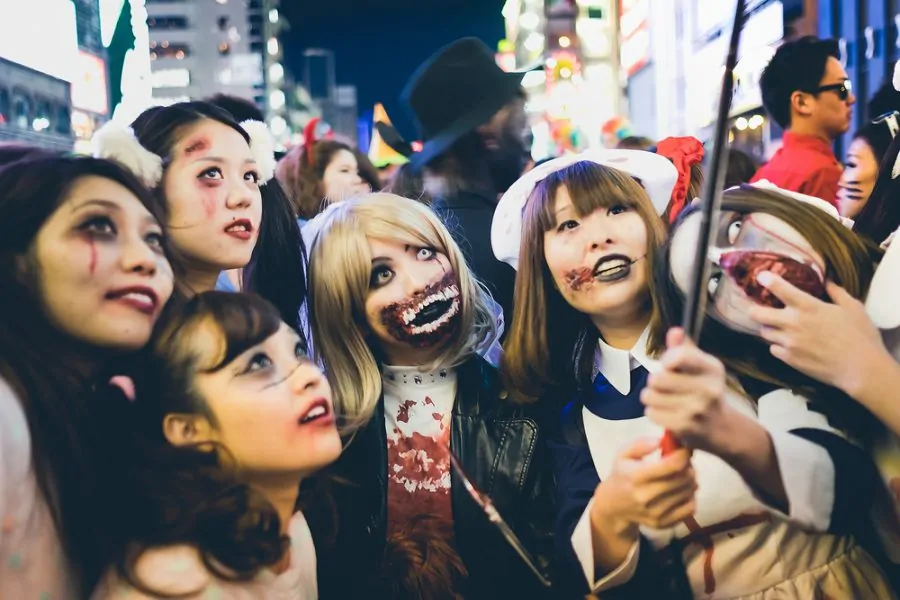
Leave a Comment